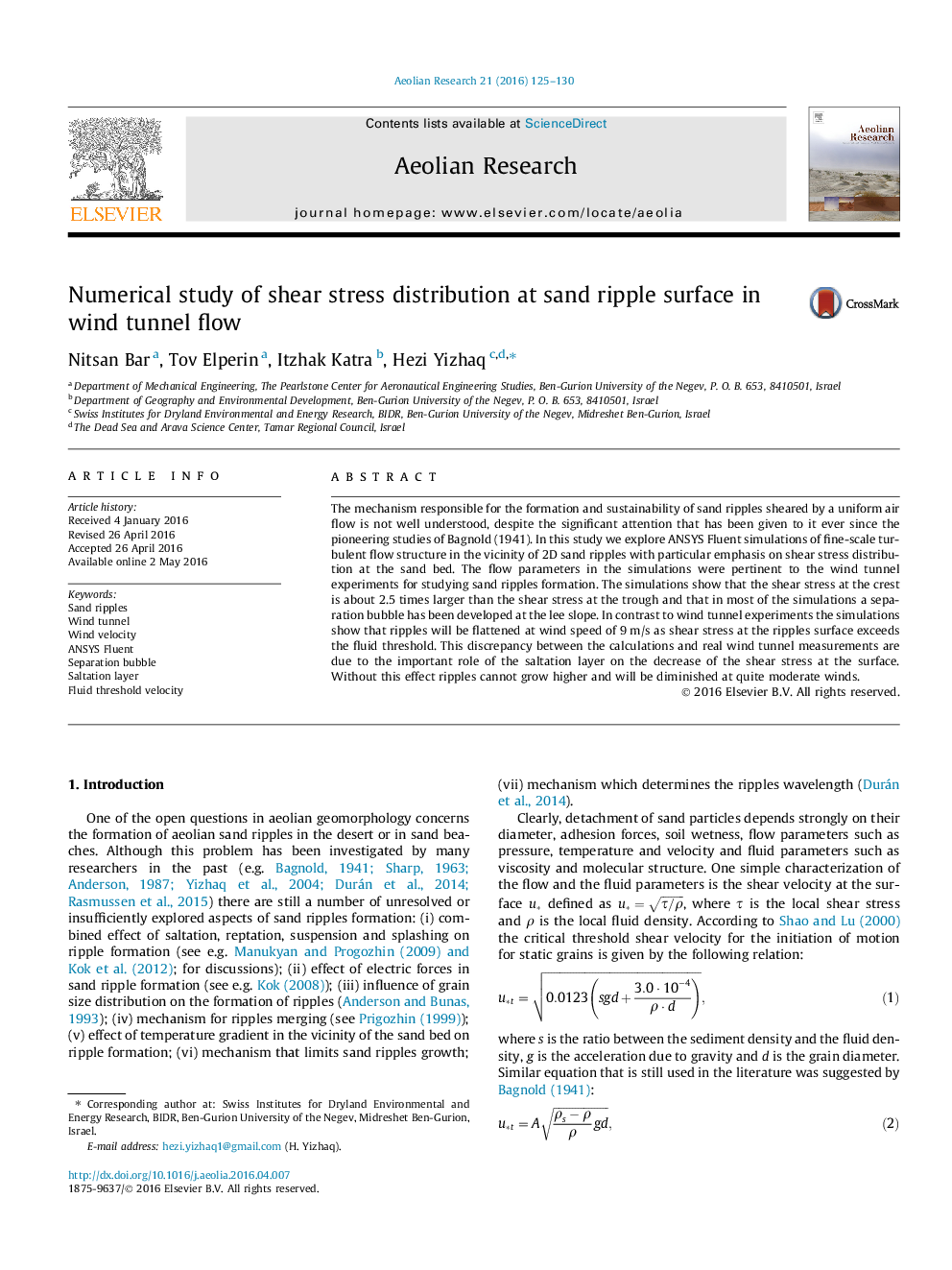| Article ID | Journal | Published Year | Pages | File Type |
|---|---|---|---|---|
| 6426286 | Aeolian Research | 2016 | 6 Pages |
â¢Two-dimensional ANSYS Fluent simulations of wind flow over sand ripples have been performed.â¢Shear stress at the crest is about 2.5 times larger than that at the trough.â¢In most of the simulations a separation bubble developed at the lee slope.â¢Ripples will be flattened at 9 m/s wind compared to 12.5 m/s in the experiment.â¢Without the effect of the saltation layer ripples cannot grow higher and remain smaller.
The mechanism responsible for the formation and sustainability of sand ripples sheared by a uniform air flow is not well understood, despite the significant attention that has been given to it ever since the pioneering studies of Bagnold (1941). In this study we explore ANSYS Fluent simulations of fine-scale turbulent flow structure in the vicinity of 2D sand ripples with particular emphasis on shear stress distribution at the sand bed. The flow parameters in the simulations were pertinent to the wind tunnel experiments for studying sand ripples formation. The simulations show that the shear stress at the crest is about 2.5 times larger than the shear stress at the trough and that in most of the simulations a separation bubble has been developed at the lee slope. In contrast to wind tunnel experiments the simulations show that ripples will be flattened at wind speed of 9Â m/s as shear stress at the ripples surface exceeds the fluid threshold. This discrepancy between the calculations and real wind tunnel measurements are due to the important role of the saltation layer on the decrease of the shear stress at the surface. Without this effect ripples cannot grow higher and will be diminished at quite moderate winds.
